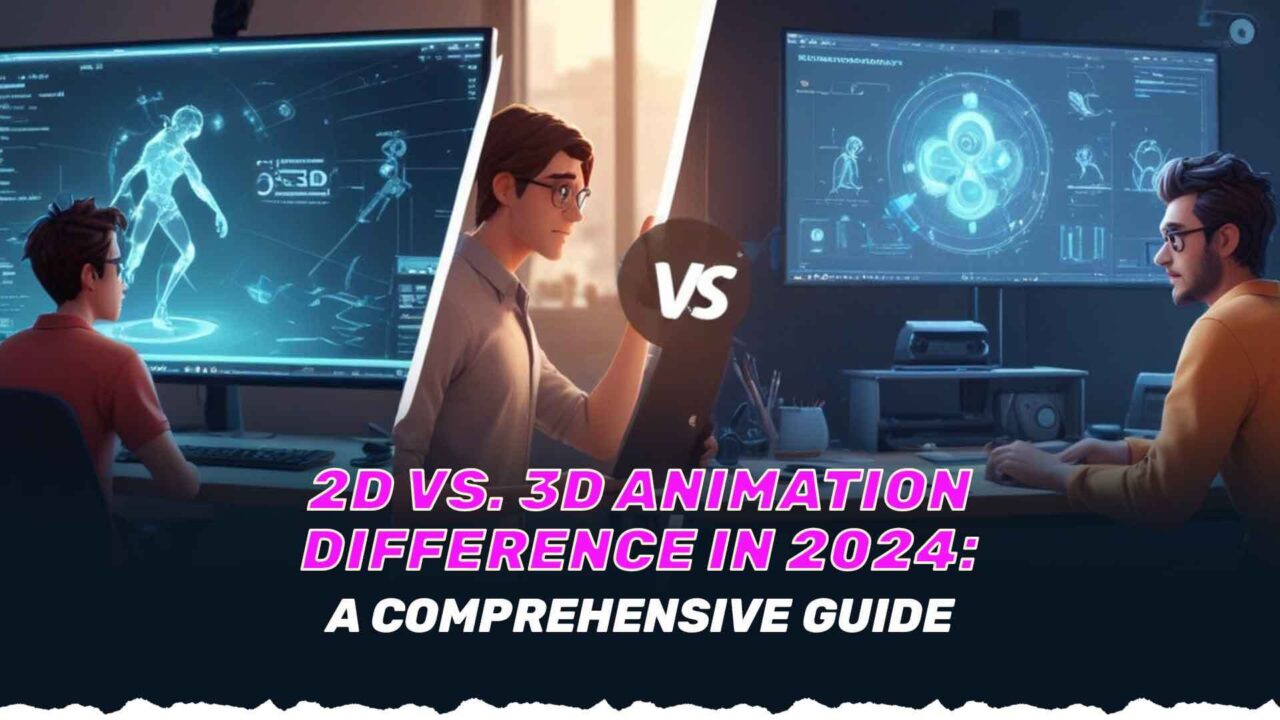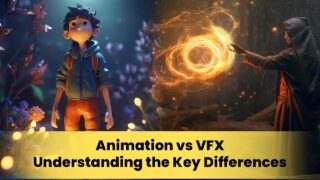What distinguishes 2D from 3D animation?
Animation has progressed considerably, enabling a variety of approaches and styles to tell tales. The difference between 2D and 3D animation remains important for prospective animators in 2024. This detailed tutorial will compare and contrast these two animation techniques, their benefits and downsides, the tools utilised, and how to pick an animation career path.
What is Animation?
Animation creates moving visuals from frames. These frames mimic movement when played quickly. Animation can be done using stop-motion, CGI, or hand-drawn methods. The goal is to create a tale or communicate a message through dynamic visual storytelling.

What are 2D and 3D Animation Differences and Similarities?
Step 1: Create Art Assets
2D Animation: In 2D animation, artists produce flat, two-dimensional visuals, generally hand-drawn or digitised. Detail and expression are emphasised in character and backdrop design.
Artists use software to build 3D models for animation. View and alter these models in virtual space from any angle. This comprises modelling, texturing, and rigging.
Step 2: Animate Assets
2D Animation: Animators draw frames individually. Digital methods employ software to simplify frame design, whereas traditional methods hand-draw each frame.
3D Animation: Animators move 3D models. This requires keyframes and interpolation for in-between frames. The extra dimension and lifelike motion might complicate the operation.
Step 3: Animation Compositing.
2D animation: Layering characters, backgrounds, and effects creates the final image. This may be done with Adobe After Effects.
Compositing in 3D animation combines produced layers of characters, backgrounds, lighting, and special effects to create a unified scene. Common software includes Nuke and Blender.
What is 2D animation?
Traditional 2D animation creates visuals in two dimensions. This early animation style is flat and hand-drawn.

Pros and Cons of 2D Animation
Pros:
- Learning and execution are simpler for beginners.
- Cost-effective: Cheaper than 3D animation.
- The look is distinct and intriguing.
- Flexibility: Great for aesthetic and experimental animation.
Cons:
- Lacks depth of 3D animation.
- Labor-Intensive: Traditional procedures take time.
- Less Realistic: Movement and depth harder to accomplish.
Techniques & Software for 2D Animation:
Techniques:
- Traditional hand-drawn animation: Each frame is drawn by hand.
- Digital 2D Animation: Create and animate 2D graphics with software.
- Cut-Out Animation: Frame-by-frame bits create characters and things.
Software:
- Adobe Animate: A leading tool for 2D animations.
- Toon Boom Harmony: Industry-standard animation software.
- Moho (Anime Studio): Caters to both beginners and pros.
Definition of 3D animation
In 3D animation, models are rotated and moved in a virtual environment. This style is used in current movies, games, and simulations because it creates realistic and immersive experiences.
Pros and Cons of 3D Animation
Pros:
- Realism: Produces realistic effects and motions.
- Versatility: Film, game, and VR compatibility.
- Depth & Dimension: Immersive viewing.
- Asset Reuse: Models and animations are simply modified and reused.
Cons:
- Complexity: Needs technical skills and high learning curve.
- Costly: Often more expensive to build owing to complex software and hardware.
- Time consuming: Detailed modelling and renderings take time.
Techniques & Software for 3D Animation:
Techniques:
- Modelling: Character and object modelling in 3D.
- Rigging: Making models moveable with skeletons.
- Animation: Moving models to animate.
- Rendering: The final image or sequence from the 3D scene is rendered.
Software:
- Blender: Free, open-source 3D creative package.
- Autodesk Maya: A popular industrial tool.
- Cinema 4D: Powerful and easy to use.
FAQ:
- Which is better: 2D or 3D animation?
Whether 2D or 3D animation is better depends on the project and personal choice. 2D animation is recommended for stylish and creative projects, while 3D for realism and dynamic scenarios.
- Which is harder 2D or 3D Animation?
Both 2D and 3D animation have issues. 2D animation involves drawing abilities and motion knowledge, whereas 3D animation requires software expertise and three-dimensional space knowledge.
- Should you learn 2D or 3D Animation first?
Beginning with 2D animation may teach movement, timing, and storytelling. After mastering these foundations, transferring to 3D animation is easier because the underlying ideas are the same but handled differently.
- How to Learn 2D or 3D Animation?
Join courses: Professional courses offer hands-on learning experience. Animation, gaming, and media studios can provide opportunity to learn from industry pros and network after you have completed the course from a good academy like Open Verse VFX Academy.
Create Your Own Projects: Start with basic tasks to practise. Personal projects, such a short-animated film or game, let you practise what you’ve learnt.
Conclusion
Both 2D and 3D animation have merits and downsides, thus the debate continues in 2024. Whether you work in 2D or 3D animation, you must understand, practise, and follow industry trends and technology. Animation is dynamic, but motivation may help you succeed.




